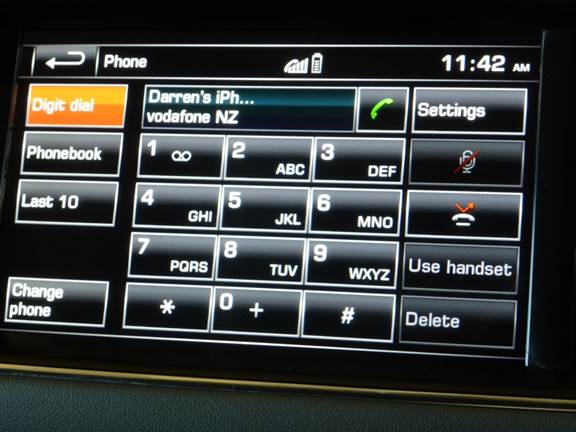How to create a safe driving policy
Every company or entity that has employees, volunteers or contractors drive its vehicles or use their own vehicles directly for work purposes must have a safe driving policy. You can create your own, or you can get our template (plus six other checklists) simply by purchasing a Fleet Driver Skills course licence.
Who is responsible for your safe driving policy?
To get started on your safe driving policy you need to decide who is going to be responsible for creating the document and implementing the policies. This could be several people, particularly if you have a fleet manager who can look after the vehicle and licensing side of things, and an HR manager that can look after the compliance and health side of things.
Driver health and wellness goals
Your drivers’ health is a major factor in their stress levels which can affect their attitude when driving. People in a rush and feeling stressed make poor decisions. Add some policies around reducing stress when driving (things like route planning, not driving at certain times of the day, using Skype for meetings rather than driving, etc). You will also need to state what your policies are for medicine, drug and alcohol use when driving.
These articles will help: Why a quiet car is better for your concentration and driving, how do illegal drugs affect your driving, driving after taking medicine, alcohol and drug limits when driving, the effect of dehydration on driving, health risks working as a professional driver.
You can also define whether the drivers must take rest breaks after a certain period of driving (usually 2-3 hours is sensible). You should state that drivers must not drive when they are tired and that they should use a route planner such as Google Maps to try to avoid traffic when possible.
Vehicle health goals
You should set figures for reducing breakdowns and for choosing environmentally friendly vehicles. Your vehicle health depends on driving style (i.e. wear and tear), maintenance schedules, the predominant type of driving, how your vehicles are stored and what is carried in them. You might, for example, prohibit your drivers from carrying pets in the car.
These articles will help: Driving and riding smoothly is faster and saves you money, basic vehicle maintenance.
Financial health goals
You should set figures for reducing at-fault crash costs, maintenance and repairs (this ties in with vehicle health goals), theft from vehicles, fuel consumption, and tickets and fines.
See these articles for more ideas: 11 ways to stop your car being broken into, 10 ways to improve your fuel economy.
Policy objectives
- What are your requirements when using company vehicles? Examples include:
- Safe, efficient driving practices
- Good road safety habits
- Vehicles are maintained and respected
- Drivers minimise their environmental impact and travel time through choosing when to travel smartly
Code of conduct
What is your code of conduct for driving? Define what are major and minor offences. Typical concepts are:
- Driving within the law at all times
- Driving safely – using appropriate speed, rather than driving at the limit
- Respecting the vehicle
- Being conscious of vulnerable road users.
Define serious breaches that may result in dismissal. These are typically:
- Alcohol or drug use and driving
- Reckless driving causing death or injury
- Driving without the appropriate licence
- Licence suspension
- Unauthorised loaning of a company vehicle
- Wilful negligence
Responsibilities of your drivers and other team members

Typical clauses would include:
- Licence requirements for driving company vehicles
- Maintenance and cleanliness
- Driving conduct (see above)
- Accident reporting (you will need a form for this which comes for free with any owner-driver or company/fleet driver account on DT)
- Eating and smoking in vehicles
- Trip logging
- Vehicle storage and parking (including what drivers do with goods that are inside vehicles)
Private vehicle use

If you allow private vehicle use in your company, you need to define the following:
- Does the driver need to seek the employer’s agreement?
- What are the vehicle requirements (registration, insurance, CoF, WoF, etc)?
- Is the driver allowed to carry or tow loads?
- Does the vehicle have to have a particular specification because of the work you do, e.g. 4WD?
- Are there any restrictions to what vehicles are allowed to do, e.g. no off-road driving?
Mobile phone use when driving

Decide which of the following is relevant for your company. Think very carefully about how you implement this:
- Not permitted to use at all (this is ideal, but often not practical)
- Permitted to use on a hands-free device (practical, but carries more risk)
- Permitted to use only if the driver pulls over (ideal and usually practical)
- Permitted to use for navigation (no reason why not, as long as there’s an appropriate cradle for the phone)
- Permitted to use as a music source
- Never permitted to use for SMS/email while moving (this should be a default policy)
Additional clauses

- Do you allow passengers in the vehicles and do they have any specific responsibilities?
- Do you have motorbike riders? If so, you will need to define their safety clothing minimum.
- Load security: if your drivers are towing trailers or carrying items in the car, they will need to know about load security
- Are drivers allowed to carry pets, relatives, personal effects, etc.
- Are you using vehicle telematics
Employer responsibilities
These are to clarify your position to your drivers, and you will need someone responsible for implementing them:
- Induction to driving
- Driver training opportunities
- Driver assessment frequency
- Refresher courses and seminars
- Keeping driver logs
- Vehicle maintenance
- Scheduling work that involves driving
- Monitoring incidents and crashes
- Choosing appropriate vehicles
Encouraging better driving
The company can encourage good driving habits by not paying drivers’ fines, setting a mobile phone policy, establishing a requirement to take breaks when driving, encouraging car-pooling and travel planning, encouraging the use of other transport modes like buses and taxis, and training drivers in awareness and fuel-efficient driving.
Downloadable safe driving policy
NZTA also has a safe driving policy template available but it is not very comprehensive and you’ll need to spend time filling out a lot of extra information.
DT provides you with a very comprehensive driving policy which comes with every owner-driver or company/fleet account (see the benefits here. You’ll also get six other checklists and forms (health declaration form, eyesight declaration form, incident reporting form, truck checklist and van/bus/car checklist) and access to unlimited safe driver training.

